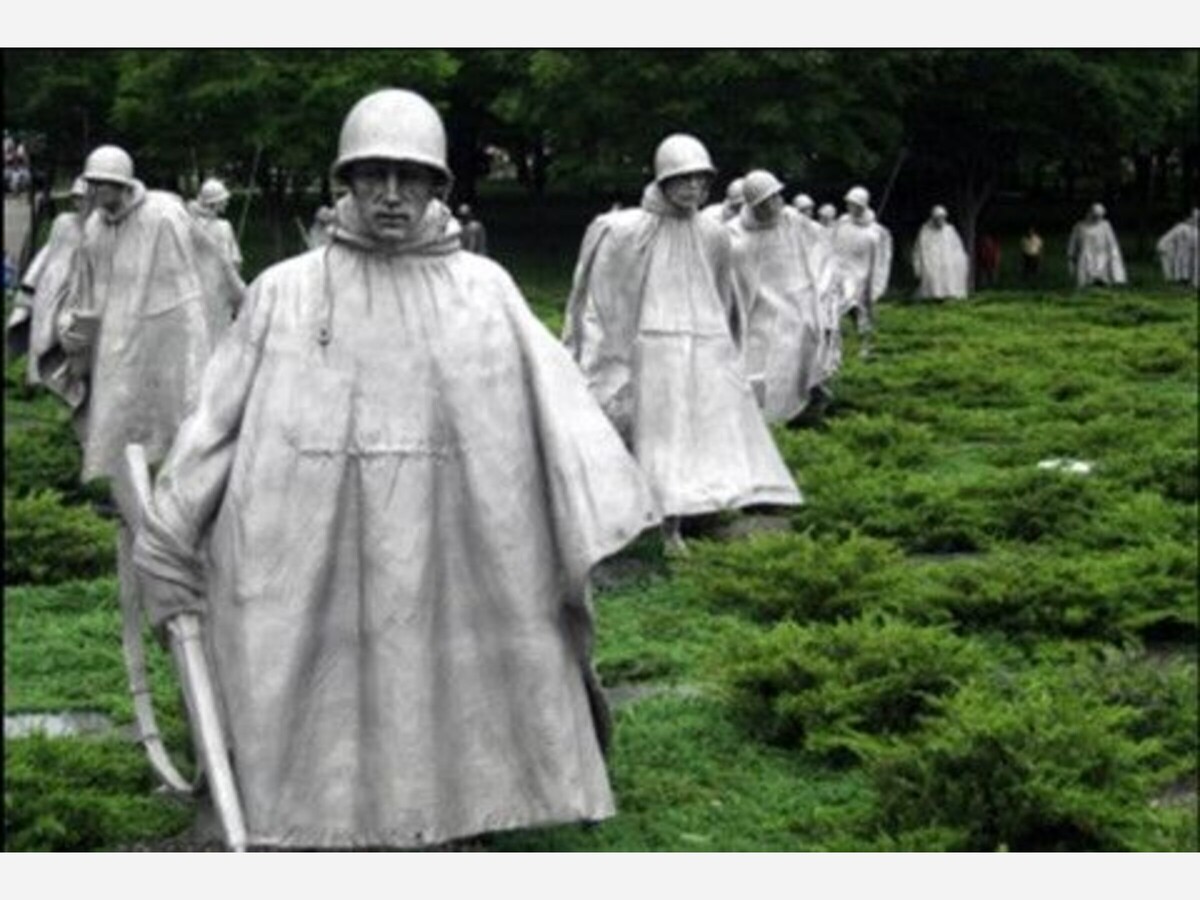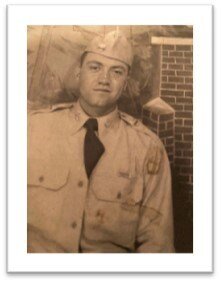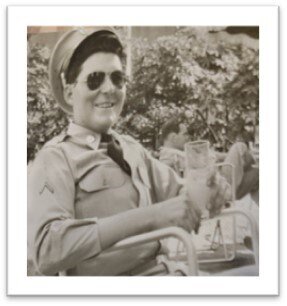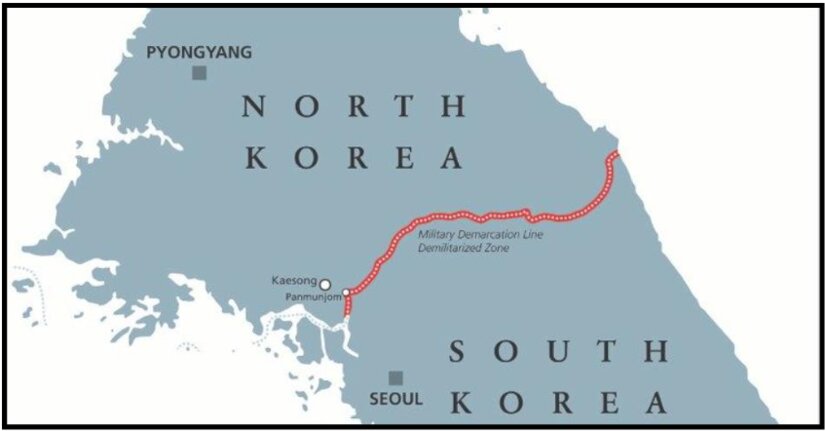Image

The signing of the Korean Armistice Agreement 69 years ago today, 10 a.m. on July 27, 1953, officially ended the brutally destructive, large-scale military actions that defined the Korean War, which left more than 5 million dead after three years.
But no peace treaty was ever signed, and hostilities continued over the decades, particularly from October 5, 1966, to December 3, 1969, when North Korea launched dozens of violent, armed incursions into South Korea.
The United States military personnel were on the ground to repel the attacks each time, and they have remained there with nearly a hundred Americans making the ultimate sacrifice in what is called America’s “Forgotten Wars.”
Morris County’s Office of Planning and Preservation is documenting its “Veterans of the Z,” those who served in the formal Korean War and those who have served since 1953 along the volatile and dangerous Korean Demilitarized Zone (DMZ) – a 2.5-mile wide, heavily militarized dividing line between North Korea and South Korea by the 1953 armistice.
CHECK OUT MORRIS COUNTY VETERANS OF THE “FORGOTTEN WARS”
“The Korea veteran listing is anticipated to be a unique one, encompassing not only the Korean conflict from 1950 to 1953, but the considerable tensions in the ensuing decades,” said Jan Williams, Cultural and Historic Resources Specialist for the planning and preservation office. “Along with the original soldiers that served during the 1950s, many veterans in the 1960s were sent to Korea instead of ‘Nam. The expectation is that the public will be submitting names of Korean veterans from 1950 all the way up to soldiers that served in ‘The Z’ quite literally through yesterday,” she added.
 Gabriel J. Bonanni, father of Morris County Administrator John Bonanni, who served in Korea.
Gabriel J. Bonanni, father of Morris County Administrator John Bonanni, who served in Korea.In 2012, the Office of Planning and Preservation began the task of listing Morris County veterans from several conflicts. The undertaking was inspired by a WWII veteran from Rockaway, Mr. Peter Chipko, who said that history would forget the military service and sacrifice that the men and women of Morris County rendered to the country.
The list, known as the Morris County Veterans Compendium, is releasing this latest effort to capture veterans’ histories regarding Korea.
To add a soldier or sailor to any of the lists, please send an email to Jan Williams: jwilliams@co.morris.nj.us.
 Robert Kent Shaw, father of Morris County Commissioner Stephen Shaw, who served in Korea.
Robert Kent Shaw, father of Morris County Commissioner Stephen Shaw, who served in Korea.The criteria for listing in the Morris County Veterans Compendium remain the same as what has been established for listings of Morris County Veterans who served in Vietnam, WWI, WWII and other conflicts. They must have been born in Morris County or lived in the county for ten years. If a veteran meets the criteria, but has retired out of state or passed away, they remain eligible for listing.
The basic information required for listing is the veteran’s name, Morris County municipality of birth or residence, and the military branch in which they served.
If you want to donate your personal Korean War items or provide original or scans of photographs and documents, please contact The Morris County Historical Society 68 Lafayette Avenue Morristown, NJ 07960 (973) 267-3465.
Amy Curry directormchs@gmail.com.
Anne Motto CollectionsMCHS@gmail.com.
Other ongoing projects involving Veterans and data collection on Morris County’s rich history may be found in the Cultural Resources Survey section at the Morris County Office of Planning and Preservation.
To enroll in the National Purple Heart database, please visit the website of The National Purple Heart Hall of Honor.
To apply for a Morris County Distinguished Service Medal, please visit the Morris County website.
If you have lost a medal, award, or decoration, please visit the Veteran’s Service Records section of the National Archives website.
 Distance from the United States to Korea = 6,563 miles
Distance from the United States to Korea = 6,563 milesMore about the Korean War:
Korean War lasted from June 25, 1950, to July 27, 1953; DMZ Wars lasted from October 5, 1966, to December 3, 1969.
Combatants included Anti-communist forces (South Korea with support from the United States) and Communist forces (North Korea with support from China and the Soviet Union).
A unified Korea had been occupied by the Japanese empire since 1895, leaving Korea in a state of limbo when Japan was defeated in World War II.
Korea was eventually split in two – with the Soviets (communists) occupying the north of the “38th parallel north” – a line of latitude on maps – and the south controlled by a United States military administration.
After years of increasingly bloody incidents on the border, the Republic of Korea (ROK) was invaded by North Korea (DPRK) on June 25, 1950.
General MacArthur deployed U.S. troops to South Korea and the war seemed to be winding down, however, the Chinese sent 200,000 troops to North Korea in October of 1950 and forced the U.N. troops to withdraw back to the 38th parallel after winning the Battle of the Ch’ongch’on River.
Although the armistice was implemented on July 27, 1953, North Korea and South Korea never signed a peace agreement, meaning technically, the Korean War is ongoing.
In December of 2021, North and South Korea, the United States, and China agreed in principle to declare a formal end to the Korean War. As of this writing in July 2022, talks have not begun.
The Korean War (1950-1953) began as a police action, which gradually became a war. The slow-paced escalation allowed Americans to concentrate on the more significant implications of the Cold War in Europe and not on the Korean conflict.
Just a few years out of WWII, the United States population feared a return to wartime rationing and hardships. American citizens were generally back to a pre-war lifestyle in the ‘50s and unenthusiastic at the prospect of another conflict requiring full-on mobilization.
North Korea continued its assault on South Korea years after the Armistice of 1953. During the Vietnam War and the tensions of the Cold War, the American press and public paid scant attention to the continuing series of attacks by North Korea, designed to test the willpower and resolve of the United States not to enter another full-scale war.
Hostilities continued to produce a bloody powder keg of incidents. Assaults included guerrilla warfare, sabotage, and terrorism directed against the ROK and American troops serving in the “Zone”- the aggression at its most deadly occurring between 1966-1969.
43 Americans were killed, 111 were injured and 85 were captured in this period.
In August 1976 the “Gardening Job” drew the nation’s attention. Briefly. American and South Korean troops were pruning a poplar tree that stood in the middle of “The Zone”. North Korean soldiers attacked the landscape detail, killing two United States Army officers.
The White House responded with “Operation Paul Bunyan”- a show of force that included hundreds of U. S. soldiers, B52s, helicopters, and tanks. Soldiers cut off every branch, leaving only the trunk standing.
Eager to put this military chapter behind them, the valor of Korean veterans and veterans of “The Z” were largely relegated to silence.
Today, Morris County remembers the veterans who served in Korea.
Follow Morristown Minute on Facebook, Instagram, and Twitter for more state and local updates.